Faces of U of T Medicine: Damien Noone
As a child in rural Ireland, Damien Noone didn’t dare to imagine he’d be a doctor when he grew up. As a teenager, a conversation with one of his high school teachers opened Noone’s eyes to the possibility. Today, he’s an Assistant Professor in the Department of Paediatrics and a paediatric nephrologist at The Hospital for Sick Children. He recently reflected on his journey into medicine with writer Erin Howe.
What sparked your interest in medicine?
As a boy, I had a few experiences that exposed me to the world of medicine.
When I was about 10, I remember my mother losing a baby through miscarriage. I remember going with my father to visit the priest for permission to bury the baby in the local graveyard. I felt so helpless. Years later in medical school I came to understand my mother’s miscarriages were due to Rhesus disease, which causes antibodies in a pregnant woman’s blood to destroy her baby’s blood cells.
About a year later, I developed a lump in my neck and was admitted to the paediatric hospital in Dublin. The doctor thought I had lymphoma, his trainee —who turned out to be right — believed I had a blocked salivary gland duct. While I was in the hospital, I met a boy with Juvenile Rheumatoid Arthritis who was on crutches and crippled with pain. I was overwhelmed at the unfairness of his illness.
Then that was it for a time. I grew up on a farm, and whenever I wanted to avoid study or homework I’d pop out to the farm to help my father. He’d generally send me right back in saying, “go study so that you don’t have to work like me”. He worked in a factory and was a part-time farmer.
A simple conversation with my career guidance teacher in secondary school had a huge impact on me. He was the first to say to me: “you could be a doctor, a lawyer or whatever you want.” At that point, no one in my family had gone to university and the words “I could” weren’t in my vocabulary.
Why was it important for you to become involved in the Diversity Mentorship Program?
I read an insightful and honest column in the Journal of the American Medical Association called Underprivileged as Privilege. Written by one of our 4th year medical students, Stephanie Zhou (click here to read a Q & A with Zhou), the article is about the realities of being a medical student —whether current or aspiring — from a lower socioeconomic status (SES) background. One particular line resonated with me: “. . .and I realized that I did fit into medicine — I fit in with my patients.” Zhou’s words echoed the sentiments I’d felt from the first day of medical school, when the ‘posh kids’ and the ‘poor kids’ sat side by side in large lecture theatres.
The ‘rich’ students had more expensive clothes, nice accents, and parents to be proud of, with fancy jobs and impressive titles. The poor were often from rural Ireland, had thick, country accents and were on government grants/subsidies because their parents couldn’t afford to send them otherwise.
The wealthier students knew where they were going and had a map to guide them. The poor were just so happy to be there they just followed the crowd, rode the waves and did what they did best — continued to fight the odds.
The differences never seemed to bother those of us who were less well-off. During the clinical years of medical school, when we met patients, our socioeconomic status became an advantage. Just as Zhou expressed in her article, we came into their own because most people aren’t wealthy and are down to earth. Also, there is nothing so humbling, grounding or levelling as illness.
What’s the most important piece of advice you would offer a young person who dreams of going to medical school?
To realize the words “I could go” or “I can” are part of your vocabulary. If you truly aspire to something, don’t stop asking for advice, seeking help and finding mentors to guide you on your journey.
Before you became a doctor, I understand you were involved with Riverdance. What was that experience like?
I took a leave of absence from medical school in Ireland to tour with Riverdance – the Show. It was a phenomenal experience. I toured the world, particularly North America and Canada for two years. I even performed at the Sony Centre for the Performing Arts here in Toronto in the late 1990s when it was still called the Hummingbird Centre. I also had the privilege of being an understudy to the lead dancer, so I got to ‘be the star’ for matinee shows in my second year with the production. And if that wasn’t exciting enough, I also fell in love with my future wife on tour — even though we’d known each other since we were 8-year olds.
What do you enjoy doing when you’re not at the hospital?
Spending time with my three girls and wife — who all dance too! I really enjoy teaching Irish Dance! It’s my ‘golf’. I’ve actually just completed my formal examinations to become a qualified Irish Dance Instructor. I’m a motivator and love empowering the children to become better dancers and independent choreographers.
What’s your favourite thing about the Faculty of Medicine?
It truly prioritizes diversity and wants the honour of welcoming good people, from all walks of life who have potential — and not just privilege — into their medical school.

Optimize this page for search engines by customizing the Meta Title and Meta Description fields.
Use the Google Search Result Preview Tool to test different content ideas.
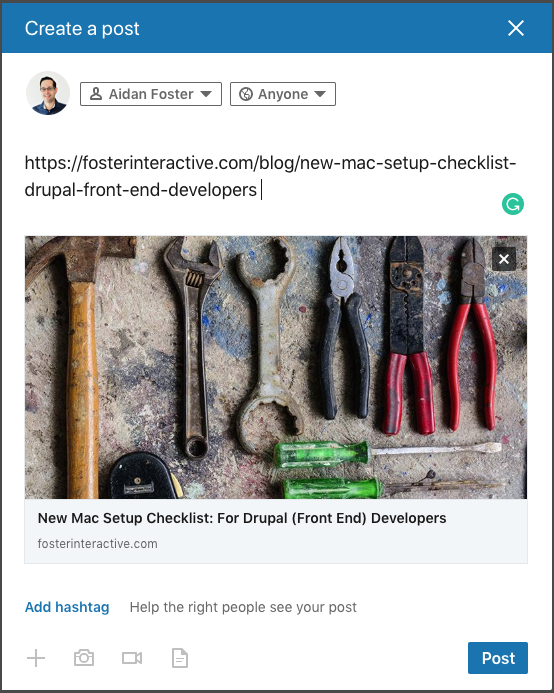
Select a Meta Image to tell a social media platform what image to use when sharing.
If blank, different social platforms like LinkedIn will randomly select an image on the page to appear on shared posts.
Posts with images generally perform better on social media so it is worth selecting an engaging image.
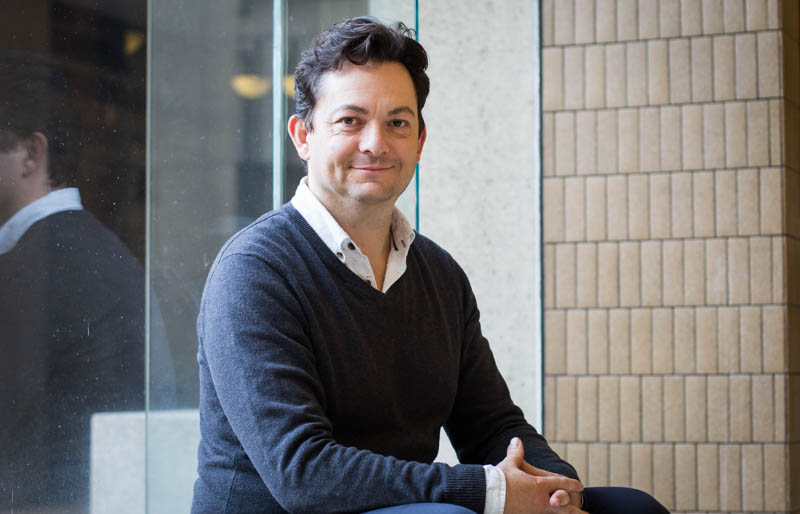
Think Afro-Pink
 Black students, faculty and staff —as well as their allies — are invited to lace up their sneakers and exercise their way to better health at a pair of breast cancer awareness events next week.
Black students, faculty and staff —as well as their allies — are invited to lace up their sneakers and exercise their way to better health at a pair of breast cancer awareness events next week.
Research shows Black women of West African descent have worse outcomes and tend to develop more aggressive breast cancer than white women. Think Afro-Pink, which aims to raise awareness, will feature Zumba class to highlight the importance of physical activity’s preventive benefits. The initative is led by Dr. Onye Nnorom, Black Health Theme Lead for the MD Program and neuroscience student Deborah Ocholi and Master of Public Health student Jo-Ann Osei-Twum.
“We want to encourage Black women to participate in prevention — to know their breasts and the risk factors for breast cancer and as well as the importance of early detection. We’re also empowering students to tell their mothers, aunts and other women about these things,” says Nnorom, who is also a lead researcher with the Health Equity Research Collaborative (HERC).
Another factor specific to the Black community — and particularly women of West African descent — is a tendency to present 10 years earlier with breast cancer. Regular mammograms are recommended every two years for women aged 50 to 74. Where for white women, the disease most commonly develops when they’re in their fifties and sixties, the disease is more likely to strike Black women when they’re in their forties and fifties. Because of this, it’s important for Black women to talk to their primary care givers about this.
Despite Canada’s universal health care system, Nnorom says not all population groups enjoy the same outcomes. For example, research shows immigrants are less likely to undergo screening, despite its potential to save lives.
“We have universal access, so I’d like to see equal outcomes for everyone,” says Nnorom.
A similar event was held for students in February. Participant feedback prompted Nnorom and her team to expand the program to include an event at U of T Scarborough. Various community partners will also be present at both event locations to provide information for information to take home and share with friends and family members.
Vouchers from Toronto Public Health will be given to women who fall within the recommended age group for mammography screening. Women can redeem the certificates for a small gift when they go for their test. Nnorom and her fellow researchers at HERC will also receive non-identifying information to determine whether or not the event helped inspire an increase in screening.
The first event will be held on Wednesday, October 4 at the Pan Am Centre in Scarborough. A second will be held on Thursday, October 5th in the Debates Room at Hart House. On both days, sessions begin at 4 p.m.
Participation is free and advance registration is encouraged. Organizers will also be accepting donations and selling T-shirts, with all funds going to The Olive Branch of Hope Cancer Support Services for Black Women.
For more information or to sign up, click here.

Optimize this page for search engines by customizing the Meta Title and Meta Description fields.
Use the Google Search Result Preview Tool to test different content ideas.

Select a Meta Image to tell a social media platform what image to use when sharing.
If blank, different social platforms like LinkedIn will randomly select an image on the page to appear on shared posts.
Posts with images generally perform better on social media so it is worth selecting an engaging image.
Erin Howe

Journalist to Scientists: Help Us Help You
The future of basic science funding and how science journalism can support it was top of mind at the Department of Biochemistry’s 2017 George Connell Lecture-Dinner, featuring The Globe and Mail’s science writer, Ivan Semeniuk.
The recent report, authored by former U of T President David Naylor, advocating an increase and reorganization in federal funding for fundamental science research, is “a potentially transformative moment,” said Professor Justin Nodwell, chair of the Department of Biochemistry. Cuts to basic science funding, and the opportunity presented by the Naylor report, means that “science journalism is more important than ever,” said Nodwell, who introduced Semeniuk at a gala dinner at the Faculty Club. “I think the more we can educate the average Canadian about what it is we do, the better. We can do it ourselves, but we also need help.”
But in order to help the public to understand the importance of basic science to human health, Semeniuk said, scientists must support journalists in a time of massive change and turmoil for the press. In 1950s, there were 102 newspapers delivered to every 100 Canadian households, he pointed out. Within the next decade, there will probably be no print newspapers left – the traditional newspaper will disappear.
Today, Google and other powerful content delivery platforms dwarf newspapers in ad revenues -- but search engines and aggregators don’t employ science reporters. And although the value of basic science to human health is enormous, Semeniuk said, the role of research is often invisible to the public – a tough sell without skilled, and well-informed journalists to write about it.
“We need to sponsor ways that independent science journalism can find its way to audiences even when capacity is diminished,” Semeniuk told 45 researchers and supporters of the Department of Biochemistry at the Sept. 20 lecture. With the increasing strength of the not-for-profit and philanthropic sector in Canada, universities could create internships, fellowships and other educational opportunities for dedicated journalists interested in telling the stories of basic science.
This was the 26th year of the George Connell Lectureship — a tribute to the esteemed biochemistry professor and former U of T president, who made countless contributions to science, both as a researcher and as an administrator. Professor Connell died in 2015; members of his family, including wife Sheila and daughter Meg, attended the dinner. Earlier in the day, Dr. Wolfgang Baumeister from the Max Planck Institute for Biochemistry, spoke about an area of emerging interest to researchers in the Department of Biochemistry : cryo-electron microscopy, a very powerful technique for elucidating the structure of large molecular entities.

Optimize this page for search engines by customizing the Meta Title and Meta Description fields.
Use the Google Search Result Preview Tool to test different content ideas.

Select a Meta Image to tell a social media platform what image to use when sharing.
If blank, different social platforms like LinkedIn will randomly select an image on the page to appear on shared posts.
Posts with images generally perform better on social media so it is worth selecting an engaging image.
Heidi Singer
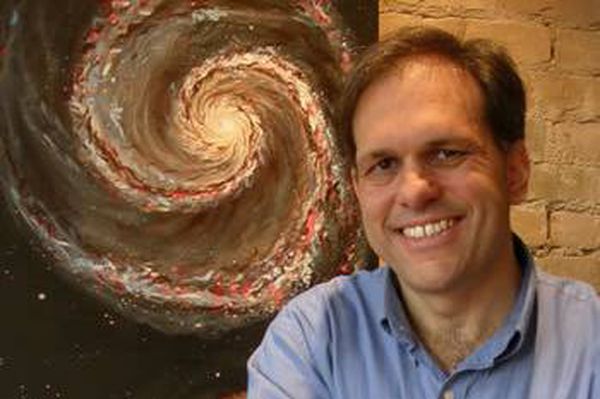
Tinder for Proteins: New Tool Sheds Light on the Rules of Molecular Attraction
Study reveals unexpected diversity in the ways proteins bind to their partners, with implications for understanding the molecular roots of disease.
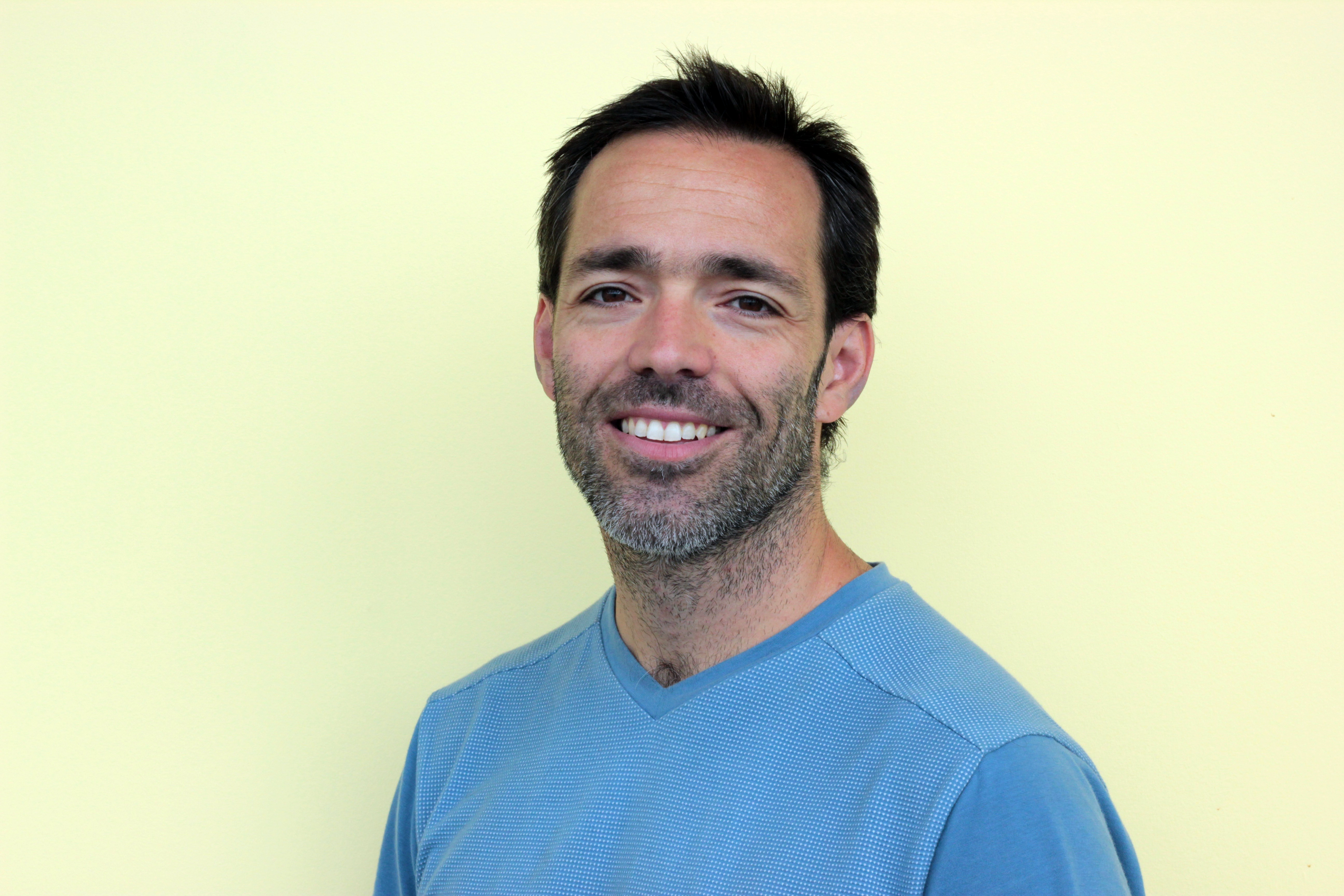
University of Toronto scientists have developed a new technology to find the exact regions in protein molecules that allow them to bind to other proteins in cells. The finding will help scientists understand how genetic mutations change protein binding to spur disease.
A team led by Professor Sachdev Sidhu, of U of T’s Donnelly Centre for Cellular and Biomolecular Research and Department of Molecular Genetics, focused on a large group of human proteins that control cell growth and are often mutated in cancer. All of these proteins use a part called the SH3 domain to connect with other proteins. The researchers found that the SH3 domains have the potential to bind to a far more diverse set of partners than previously thought, vastly expanding their possible biological roles. The team published its results September 7 in the journal Structure.
Most diseases occur when proteins go awry by, for example, losing the ability to bind to their partners and/or to acquire new alliances.
“Despite being one of the best-studied protein families, our results reveal entirely new and unexpected partnerships and functions for many family members,” says Sidhu, who is also Director of the Centre for Commercialization of Antibodies and Biologics and Senior Investigator at the Ontario Institute for Cancer Research. “In a broader sense, the findings highlight how much still remains to be learned about the basic processes within human cells”.
The study was made possible by a new technology that couples state-of-the-art protein engineering with rapid DNA sequencing, allowing the team to test a staggering 10 billion protein interactions—10 million times more than what is possible with other available methods.
Proteins are the products of genes that make up our cells and do most of the work in them. By binding to each other, proteins carry out cellular processes which ensure that cells grow and divide in a tightly controlled fashion.
“If you understand molecular rules governing protein interactions, then you can try to predict binding partners, something that’s still very hard to do,” says Joan Teyra, a research associate in the Sidhu lab who worked on the study.
Proteins are made from amino-acids stitched together in a string which then gets folded origami-style to form a three-dimensional protein molecule. Among the folds are the binding sites with which the proteins contact one another. These sites harbor short amino acid patterns that can only be “read” by the correct partners, ensuring that the binding is precise and tight.
The hunt for the SH3 domains’ interacting partners began in the 1990s when researchers discovered that they bound proteins containing the PxxP pattern, where “P” stands for the amino acid proline and “x” for any amino acid. But the pattern turned out to be too common, found all over the proteins, even in places where binding does not happen.
Teyra and colleagues identified more than 100 new amino acid patterns, in the vicinity of the PxxP, that are key for binding. What’s more, the team found that SH3 domains can bind to large swaths of targets that don’t even contain the PxxP, upending the widely held belief that the PxxP solely dictates the binding.
To do this, the team engineered protein fragments—containing all possible patterns of amino acids—to find the ones that bound tightly to more than 100 different SH3 domains, followed by data analysis to identify the exact amino-acid segments that made the binding possible.
“After 30 years of research, this is the most comprehensive mapping study for the SH3 domains,” says Teyra. “We confirmed that PxxP is the most common way of recognizing proteins, but we found that 25 per cent of target fragments don’t even have the PxxP. This is very interesting because it suggests that the SH3 proteins could also be binding totally different proteins from what we are used to and that vastly expands the biology field.”
This means that the researchers can now cast a wider net in search of proteins capable of binding the SH3 domain to reveal new ways in which these proteins work. The key to this follow up research will be to integrate data from other fields and studies, said Teyra. To do this, the Sidhu team is collaborating with computational expert Gary Bader, also in the Donnelly Centre and professor in the Departments of Molecular Genetics and Computer Sciences.
This research was supported by funding from the Canadian Institutes of Health Research.

Optimize this page for search engines by customizing the Meta Title and Meta Description fields.
Use the Google Search Result Preview Tool to test different content ideas.

Select a Meta Image to tell a social media platform what image to use when sharing.
If blank, different social platforms like LinkedIn will randomly select an image on the page to appear on shared posts.
Posts with images generally perform better on social media so it is worth selecting an engaging image.
Jovana Drinjakovic

U of T Researcher: Can Free Prescriptions Save Health Dollars?
Could a publicly-funded pharmacare program improve health while saving money? An ongoing project led by Dr. Nav Persaud, assistant professor at the University of Toronto Department of Family and Community Medicine (DFCM) and researchers at St. Michael’s Hospital, is hoping to answer this question over the next year.

“I see it every day with patients who have diabetes that is not well controlled because they can’t afford their medication,” says Persaud. “Their health care visit is publicly funded but that is a waste because they can’t afford the treatments they need.”
Patients were recruited from primary care sites like St. Michael’s and, others outside Toronto. Eligible participants self-reported having trouble paying for medications in the last twelve months. They are receiving free medicines to assess the likelihood that they take the treatments as prescribed and to assess the impact on their health.
“We shouldn’t be able to do a study like this in a high-income country like Canada,” says Persaud. “More should be done for Canadians who need to take their medication.”
Canada is one of the few countries in the developed world that offers universal health care but does not fund treatment. In Quebec alone, one-third of prescriptions are not filled and non-adherence is greater for treatments that are more expensive.
“I believe that Canadians want a pharmacare program where medication is included in the health care system like all the other developed countries,” says Persaud. “That approach seems to be better and more efficient than the patchwork system we have it right now.”
The project was funded by St. Michael’s Hospital Foundation, CIHR and Ontario SPOR support unit.

Optimize this page for search engines by customizing the Meta Title and Meta Description fields.
Use the Google Search Result Preview Tool to test different content ideas.

Select a Meta Image to tell a social media platform what image to use when sharing.
If blank, different social platforms like LinkedIn will randomly select an image on the page to appear on shared posts.
Posts with images generally perform better on social media so it is worth selecting an engaging image.
Francoise Makanda

Scientists Enlist Engineered Protein to Battle the MERS Virus
A custom-engineered protein destroyed the deadly virus in the lab; could become a sweeping anti-viral in medicine and farming
In June 2012, a 60 year-old man with flu-like symptoms walked into a private hospital in Jeddah, Saudi Arabia. Two weeks later, he died from multiple organ failure, becoming the first victim of a mysterious virus that came to be known as Middle East Respiratory Syndrome or MERS.
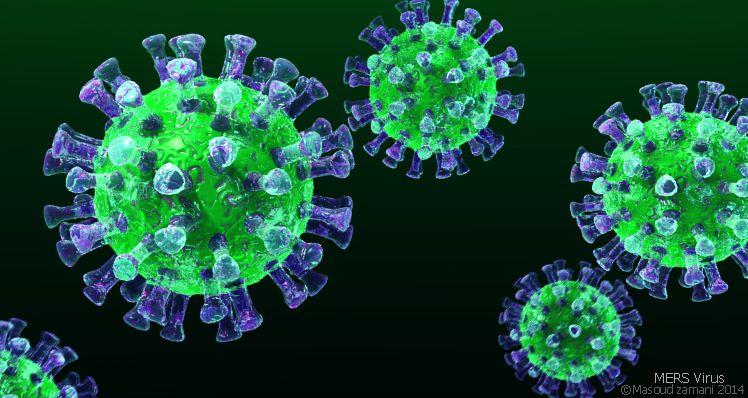
The World Health Organization (WHO) has identified MERS as an urgent threat with no vaccine or treatment in sight. This could change thanks to a new anti-viral tool, developed by University of Toronto researchers.
Writing in the journal PLoS Pathogens, the team led by Professor Sachdev Sidhu, of the Donnelly Centre for Cellular and Biomolecular Research and Department of Molecular Genetics, describe how they turned ubiquitin, a staple protein in every cell, into a drug capable of thwarting MERS in cultured human cells. Because the technology can be applied to a wide range of pathogens, it could become a game-changer in anti-viral therapeutics with implications for human health and the farming industry.
“Vaccines are important for prevention, but there is a great need for anti-viral medicines to treat people who have become infected,” says Dr. Wei Zhang, a postdoctoral research fellow in Sidhu’s lab who did most of the work on the study.
MERS is similar to SARS, the virus that killed almost 800 people in a 2002 global epidemic. Both kill upwards of a third of people infected and, like many viruses, emerged from animals—bats and camels in the case of MERS—after mutating into a form capable of infecting human cells. Although MERS has so far been detected in 27 countries since the first case emerged in 2012, the outbreak has largely been contained within Saudi Arabia, according to the WHO.
Like many viruses, MERS works by hijacking the ubiquitin system in human cells composed of hundreds of proteins that rely on ubiquitin to keep the cells alive and well. Upon infection, viral enzymes alter ubiquitin pathways in a way that allows the virus to evade the immune defense while multiplying and destroying the host tissue as it spreads in the body.
“Viruses have evolved proteins that allow them to hijack host proteins. We can now devise strategies to prevent this from happening,” says Zhang.
Zhang and colleagues engineered the human ubiquitin protein into a new form that paralyses a key MERS enzyme, stopping the virus from replicating. These synthetic ubiquitin variants act quickly, completely eliminating MERS from cells in a dish within 24 hours.
The researchers also created UbVs that blocks the Crimean-Congo virus, the cause of a haemorrhagic fever that kills about 40 per cent of those infected.
And they’re designed to only target only the virus -- hopefully minimizing side effects in any future drug.
But before these engineered proteins can be developed into medicine, researchers first must find a way to deliver them into the right part of the body. For this, Zhang and Sidhu are working with Dr. Roman Melnyk, a biochemist in The Hospital for Sick Children and a world expert in protein delivery.
The team is also investigating the possibility of finding drugs that work in a similar manner but can already cross the cell membrane.
It is likely that the proteins will be tested first in plants and animals where regulatory approvals are less strict than they are for human drugs. “We are also working on an engineered ubiquitin that targets a corn virus responsible for destroying large swaths of corn fields in North America, with colleagues in Manitoba,” says Zhang.
In the meantime, Zhang will continue to improve delivery of his designer proteins to human cells that target not only MERS but also other viruses. He hopes others will follow suit.
“With our tool, we can quickly generate anti-viral medicine and we hope that our method will inspire other researchers to try it out against diverse pathogens,” says Zhang.
The study was done in collaboration with Professor Marjolein Kikkert, of Leiden University Medical Centre in The Netherlands and Professor Brian Mark at the University of Manitoba.

Optimize this page for search engines by customizing the Meta Title and Meta Description fields.
Use the Google Search Result Preview Tool to test different content ideas.

Select a Meta Image to tell a social media platform what image to use when sharing.
If blank, different social platforms like LinkedIn will randomly select an image on the page to appear on shared posts.
Posts with images generally perform better on social media so it is worth selecting an engaging image.
Jovana Drinjakovic

Genetics and Lactose Intolerance Related to Low Vitamin D Levels
New research from the University of Toronto shows that people genetically intolerant to lactose, the main sugar found in dairy, have lower blood levels of vitamin D than the general population.
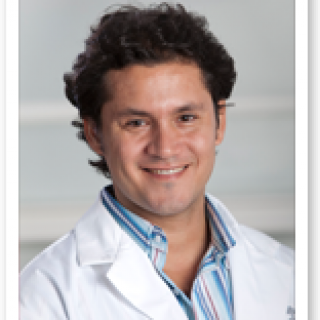
The researchers found those who had a gene associated with lactose intolerance (called LCT) consumed lower amounts of dairy products than those without that variation. The lactose intolerant also had lower levels of vitamin D in their blood – unsurprisingly, since dairy products are fortified with vitamin D, and most people don’t get enough of this vitamin from the sun or from other foods.
“We were not surprised that lactose intolerant people ate less dairy – but we were surprised that they did not compensate by supplementing or eating other foods fortified with this crucial nutrient,” said Ahmed El-Sohemy, a professor of nutrition at the Faculty of Medicine, who authored the study with Ohood Alharbi, a PhD candidate in U of T’s Department of Nutritional Science. “These findings speak to the need for greater awareness for those who limit dairy because of lactose intolerance. They need to be mindful of getting enough vitamin D from other fortified foods like certain brands of orange juice, or to consider trying lactose -free dairy products.”
The researchers also confirmed previous findings that those who have the gene for lactose intolerance are slightly shorter than those who don’t – suggesting insufficient intakes of these essential nutrients are limiting bone growth. And, for the first time, they found that people with just one, instead of two, copies of this variant were also affected by lactose intolerance – albeit to a lesser degree -- suggesting that clinical definitions and genetic classifications of lactose intolerance could be expanded.
Lactose intolerance was found across ethnic groups – although the largest proportion by far occurred in people of East Asian heritage.
The study, of 1,495 Canadian men and women from different ethnicities, will be published in the June 2017 issue of the Journal of Nutrition. It is available now online.

Optimize this page for search engines by customizing the Meta Title and Meta Description fields.
Use the Google Search Result Preview Tool to test different content ideas.

Select a Meta Image to tell a social media platform what image to use when sharing.
If blank, different social platforms like LinkedIn will randomly select an image on the page to appear on shared posts.
Posts with images generally perform better on social media so it is worth selecting an engaging image.
Heidi Singer
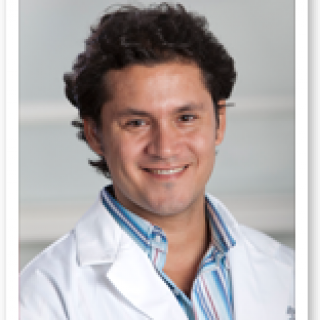
U of T Helps Moms Pursue Higher Education
For mothers without a high school diploma, higher education can seem like an impossible dream – and the effects of poverty on health are well documented. That’s why a Faculty of Medicine official helped welcome more than 50 moms to campus May 9 to learn that their dream could become a reality.
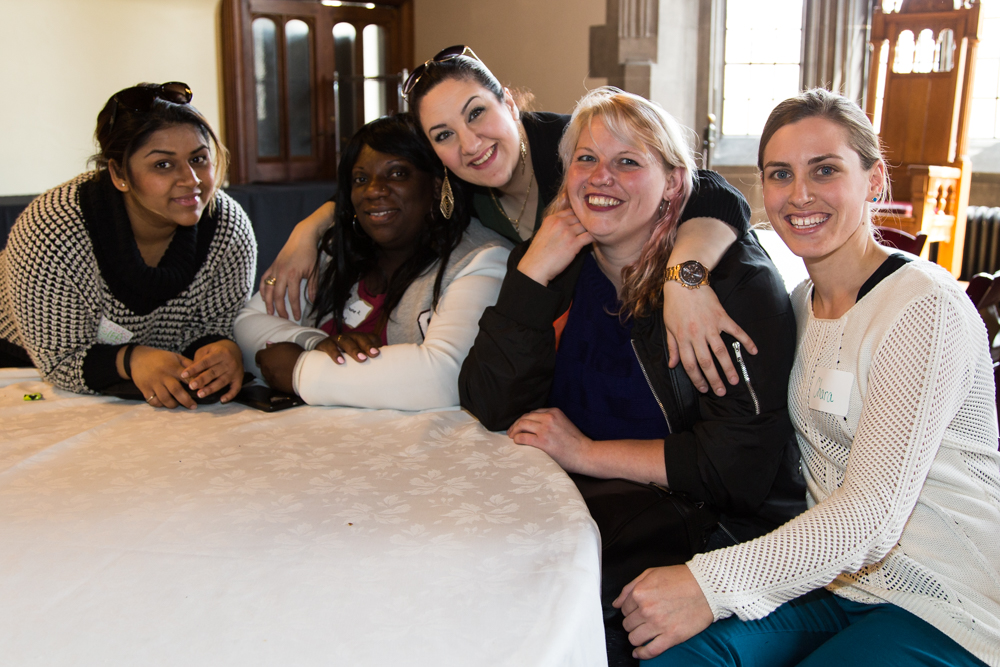
The second annual Role Model Moms Post-Secondary Academy, hosted at Hart House, was an inspiring field trip for participants of the Toronto City Mission’s Role Model Moms program. The program gives mothers the academic knowledge, confidence, and life skills necessary to pass the high school equivalency exam.
Representatives from U of T, Humber College, Centennial College, Ryerson University, and the City of Toronto offered information about support and resources available to people looking to further their education.
“We’re excited to welcome and inspire women who might otherwise feel that college or university are out of reach,” says Roxanne Wright, Community Health Placement Officer at U of T’s Faculty of Medicine. “Higher education can be within everyone’s grasp. This event is one way we can help ensure that is realized by all.”
Almost half of Canadian-born students living in lower-income neighbourhoods don’t pursue higher education due to lack of information, money, child care and support.
To address these barriers, participants connected with other student moms who successfully navigated the opaque process of becoming a first-generation post-secondary student.

Optimize this page for search engines by customizing the Meta Title and Meta Description fields.
Use the Google Search Result Preview Tool to test different content ideas.

Select a Meta Image to tell a social media platform what image to use when sharing.
If blank, different social platforms like LinkedIn will randomly select an image on the page to appear on shared posts.
Posts with images generally perform better on social media so it is worth selecting an engaging image.
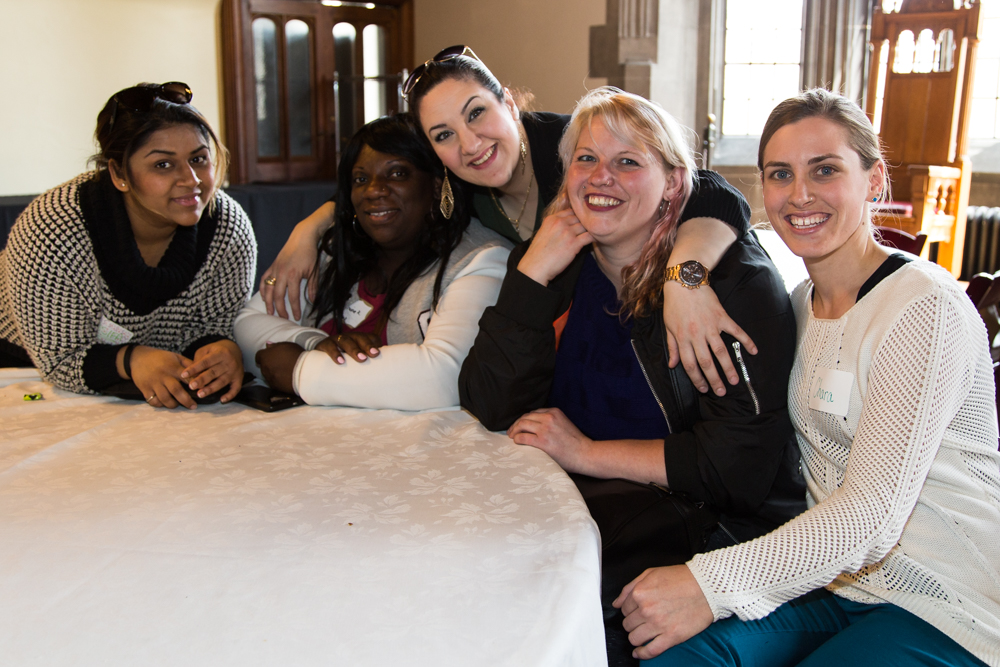
U of T Inventor-Entrepreneur Honoured With Governor General’s Innovation Award
Honour recognizes outstanding Canadians who contribute to the country’s success and inspire the next generation
The molecules he works with are so small they can’t be seen with the naked eye, but for Professor Paul Santerre, who is being honoured with the 2017 Governor General’s Innovation Award, it’s what you do with those molecules that counts.

One of six awardees to be recognized at a special ceremony at Rideau Hall on May 23rd, Santerre’s award recognizes his sweeping entrepreneurial vision for scientific inquiry — and its vital role in shaping Canada’s innovation economy. Santerre is one of the world’s leading biomaterials researchers and a professor in the Faculty of Dentistry and the Institute of Biomaterials & Biomedical Engineering (IBBME) at the University of Toronto. He is also a lead researcher at the Translational Biology and Engineering Program, part of the Ted Rogers Centre for Heart Research.
“We’d like to congratulate Professor Santerre for winning the University of Toronto’s first-ever Governor General’s Innovation Award,” said Vivek Goel, the university’s vice-president of research and innovation. “This is a wonderful recognition of his cutting-edge research and his efforts to bring those innovations to market, enabling Canadians and others to lead healthier lives.”
One of Santerre’s most successful inventions is Endexo™, a surface-modifying, flexible material that can be applied to medical equipment to solve several key medical challenges. For example, it can prevent blood from sticking and clotting to surfaces when manufactured into medical tubing — one of the major reasons for catheter failure —without the need for blood-thinning drugs. Santerre commercialized Endexo and other surface-modifying molecules through U of T start-up company Interface Biologics, Inc. (IBI). Now in its sixteenth year, IBI has three distinct molecule-based technology platforms that can be applied to hundreds of different products, with an estimated potential worth in the billions.
Broken Hearts and Bone Tape
Useful for far more than medical devices, Santerre’s surface-modifying technologies are designed to work in harmony with the body’s natural repair processes. With a collaborative team at the Ted Rogers Centre for Heart Research, Santerre was recently awarded a three-year, $600,000 Collaborative Health Research Project grant to continue to develop a biodegradable cardiac patch. Adapted from the same basic concepts underlying his surface modifying molecules, the patch persuades damaged cardiac tissues to re-form while it slowly degrades into materials that the body can easily flush.
Importantly, the materials in the patch will calm immune responses — preventing fibrotic scar tissue from forming on the heart — and reduce the risk of heart failure. Yet another application of the technology could revolutionize how complicated craniofacial fractures are repaired. Rather than surgically inserting plates and metal screws into the head and face, a ceramic-based “bone tape” that promotes bone growth could be applied to fracture sites. Surgeons will be able to apply this ceramic-based bone tape directly to fractures without the added need for glue, screws or pins. Like with the heart patch, the materials are designed to calm immune responses and slowly biodegrade as new bone forms, ensuring better cosmetic outcomes as well as faster healing times.
“This is invention spinning off invention,” Santerre said, crediting his success as a researcher in part to the collaborative and cross-disciplinary culture being fostered by the university and its partnerships, such as that formed between Sick Kids, UHN, and U of T to create the Ted Rogers Centre for Heart Research, where Santerre’s lab is located. “It’s truly amazing to watch. When visitors come here they can’t believe its collaborative nature,” he added.
A Hub of Innovation In addition to his own growing company, Santerre has been guiding his students in commercializing their discoveries through start-up companies, such as the recently founded Polumiros Inc., which is developing its first product for market: a non-inflammatory, biodegradable “tissue filler” for replacing breast tissue after breast cancer surgeries. Santerre also helps to mentor more than 70 trainee-based startup companies across U of T in his role as co-director of the Faculty of Medicine’s Health Innovation Hub (H2i).
For Santerre, the H2i Hub and the other eight accelerators presently active on campus points to a seismic shift in Canada’s intellectual institutions, as the university aligns itself with entrepreneurship. It’s a move he views as critical to Canada’s economic development and its ability to compete in the global health care and innovation industries. Health care represents the world’s largest and fastest growing economic market, contributing as much as $1 out of every $5 to the GDP in North America. But while Canada — Toronto in particular — is poised to become a world leader in this growth industry, Santerre points out that this can’t be accomplished without major investment from Canadian universities.
“The argument that academia should steer away from contributing to applied knowledge with an entrepreneurial perspective is no longer as tenable as it once was,” said Santerre, who was awarded the NSERC Synergy Award for Innovation in 2012, the Ernest C. Manning Innovation Award’s Principal Award in 2014, and U of T’s prestigious Connaught Innovation Award earlier this year.
“I extend to Paul my most sincere congratulations on this well-deserved honour,” said Daniel Haas, Dean of the Faculty of Dentistry. “This award is a recognition of Paul’s ingenuity and drive to bring the University of Toronto, and by extension, Canada, to the forefront of the innovation industries through its applied and clinical research, and a direct reflection of his enormous impact.”
“Professor Santerre’s outstanding research and inventions are a brilliant example of how multidisciplinary collaboration can address complex challenges and help people live longer, healthier lives,” said Cristina Amon, Dean of the Faculty of Applied Science & Engineering. “On behalf of the Faculty, my warmest congratulations to him on this richly deserved and prestigious recognition.”
Now in its second year, the Governor General Innovation Awards program recognizes “trailblazers and creators” who contribute to a culture of innovation in Canada.

Optimize this page for search engines by customizing the Meta Title and Meta Description fields.
Use the Google Search Result Preview Tool to test different content ideas.

Select a Meta Image to tell a social media platform what image to use when sharing.
If blank, different social platforms like LinkedIn will randomly select an image on the page to appear on shared posts.
Posts with images generally perform better on social media so it is worth selecting an engaging image.
Erin Vollick

Pioneering Study Shows Large Differences in Probiotic Yogurt Health Benefits
A University of Toronto study, the first of its kind, reveals that not all probiotic yogurts were created equal.
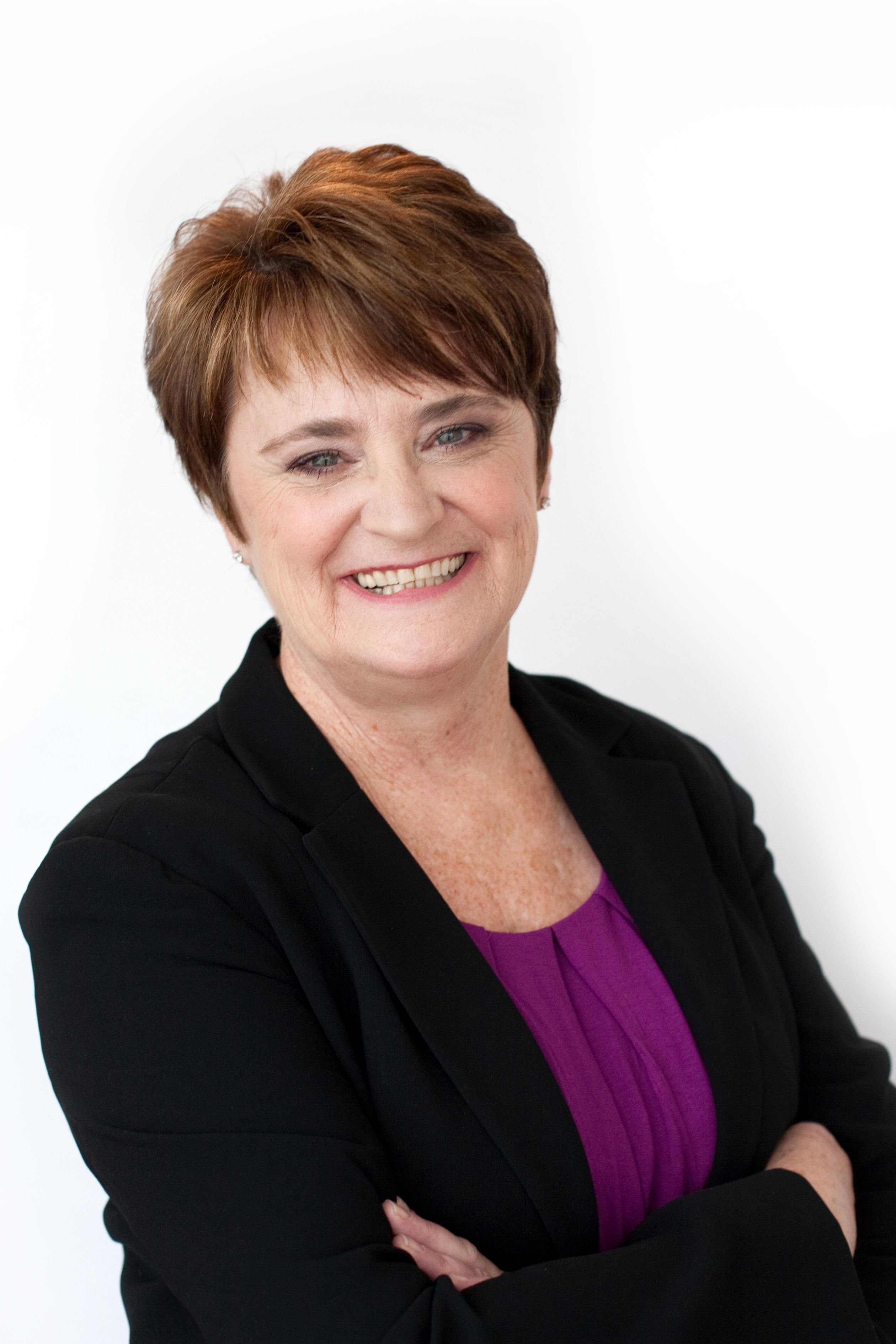
While all probiotic yogurts support intestinal health, a study of common supermarket yogurts marketed for their probiotic health properties, found that products could offer a variety of additional health benefits not advertised on their label. However, in many cases the dosage of probiotics in these products are too low to offer the health benefits found in clinical trials.
“Most people don’t realize that different products contain different types of probiotic bacteria and therefore may offer different health benefits,” says Mary Scourboutakos, a postdoctoral research associate who co-authored the study along with Professor Elena Comelli and Professor Mary L’Abbe, chair of the Department of Nutritional Science. “Our study showed there’s a gap between the health benefits found in clinical trials and the benefits that consumers can expect to receive from the probiotic food products in the marketplace.”
Probiotics are ‘good’ bacteria that survive digestion and reach our intestines. All probiotic yogurt is healthful because these good bacteria support the intestines, aid digestion, and crowd out harmful bacteria in the gut. Currently, Health Canada requires that products labelled as ‘probiotic’ contain at least one billion per serving.
“Products are meeting the minimum standards to be called probiotics but we found that with higher doses some products could be doing much more,” says Comelli, a probiotic researcher in U of T’s Department of Nutritional Science.
Probiotics are one of the fastest-growing product markets globally. Emerging research has shown probiotics can improve conditions such as Irritable Bowel Syndrome (IBS) and decrease risk for the common cold. But not all yogurts contained the strains that help with these specific conditions. And sometimes, yogurts that contained these strains had dosages that were up to twenty-five times lower than has been found to be effective in clinical trials.
The researchers found that the strain Bifidobacterium lactis DN-173 010 contained in Dannon’s Activia has been shown to improve regularity as well as decrease stomach pain and bloating in individuals with irritable bowel syndrome. But they found that two to twenty-five servings of this yogurt per day may be necessary, depending on the condition being addressed.
Another common brand, DanActive, contains the Lactobacillus casei DN 114-001 strain, which helps decrease the frequency and length of the common cold and the flu. In this case, two servings per day are needed to achieve these effects.
Yoptimal contains the Bifidobacterium lactis BB12+ and Lactobacillus acidophilus LA-5 strains, which decrease cavity-causing bacteria and may marginally improve glycemic control and cholesterol levels in diabetics. One-half to two servings per day are needed, according to the study.
BioBest also fights the common cold, but due to its lower dosage, 20 servings a day would be needed to achieve the effect observed in clinical trials.
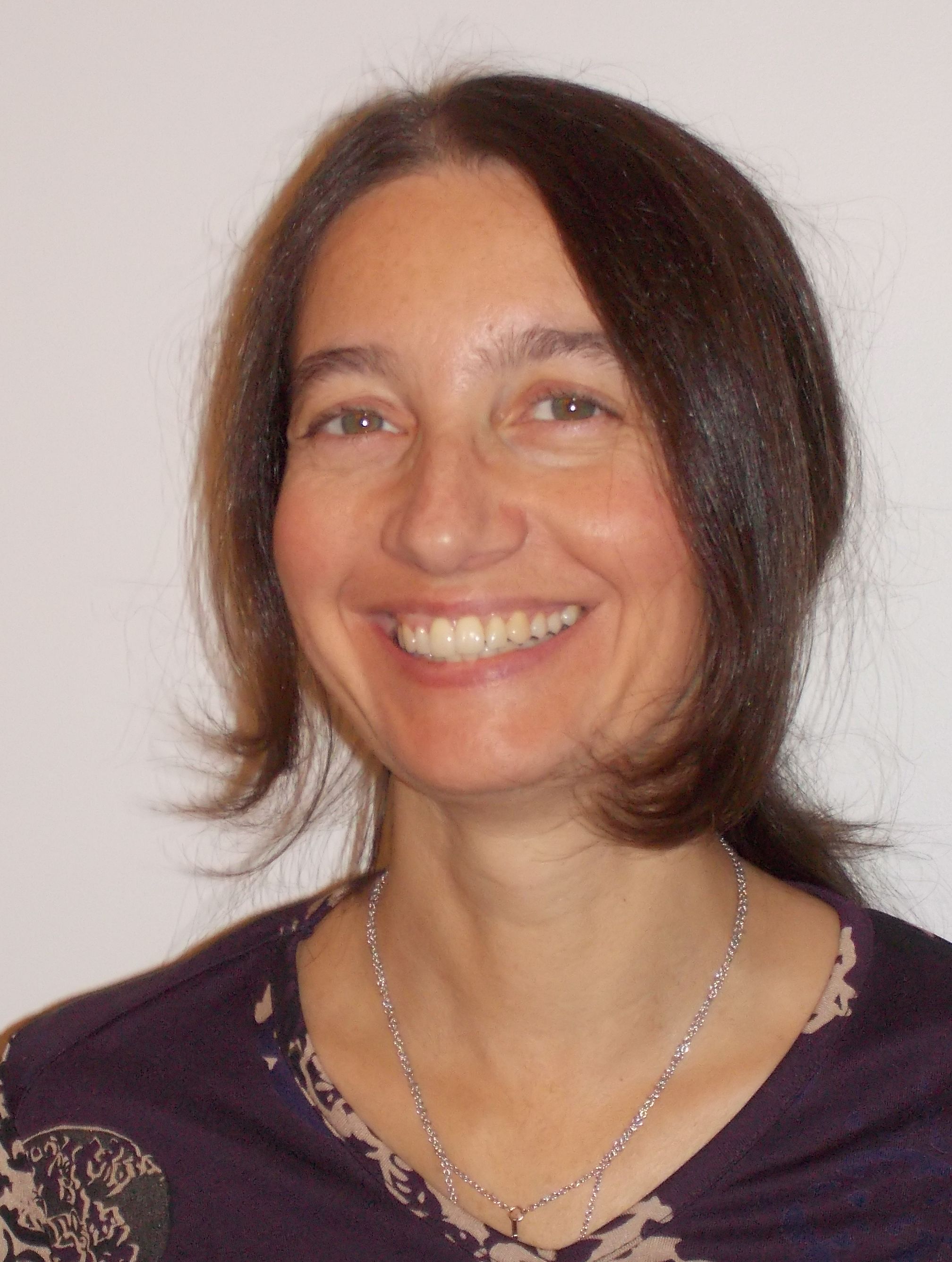
None of the yogurt brands make such exacting health claims. In Canada, food labelling laws prevent them from doing so. Consumers looking for protection against specific conditions would have to research which strains help, and then search yogurt labels to find those strains. Hence, this research shows that more specific probiotic labelling laws may help consumers make more informed choices.
Scourboutakos noted that kefir (fermented milk) products in the study (produced by Liberte and Iogo) had the greatest variety of different types of probiotic bacteria (sometimes greater than ten) and often contained the highest dosage. While there were no studies testing the particular combinations of strains found in these products, some research suggests that products with a larger number of strains (such as these kefir s) may have greater health benefits compared to products that only contain one or two strains. The study results underscored the lack of research on probiotic foods.
The researchers focused on the most common supermarket brands, and did not study health-food store yogurts. To receive benefits, probiotics need to be consumed regularly, because these bacteria are constantly passing through the body.
Elena M. Comelli has received funds from a probiotic company to support research; however, the company was not involved in this study.

Optimize this page for search engines by customizing the Meta Title and Meta Description fields.
Use the Google Search Result Preview Tool to test different content ideas.

Select a Meta Image to tell a social media platform what image to use when sharing.
If blank, different social platforms like LinkedIn will randomly select an image on the page to appear on shared posts.
Posts with images generally perform better on social media so it is worth selecting an engaging image.
Heidi Singer